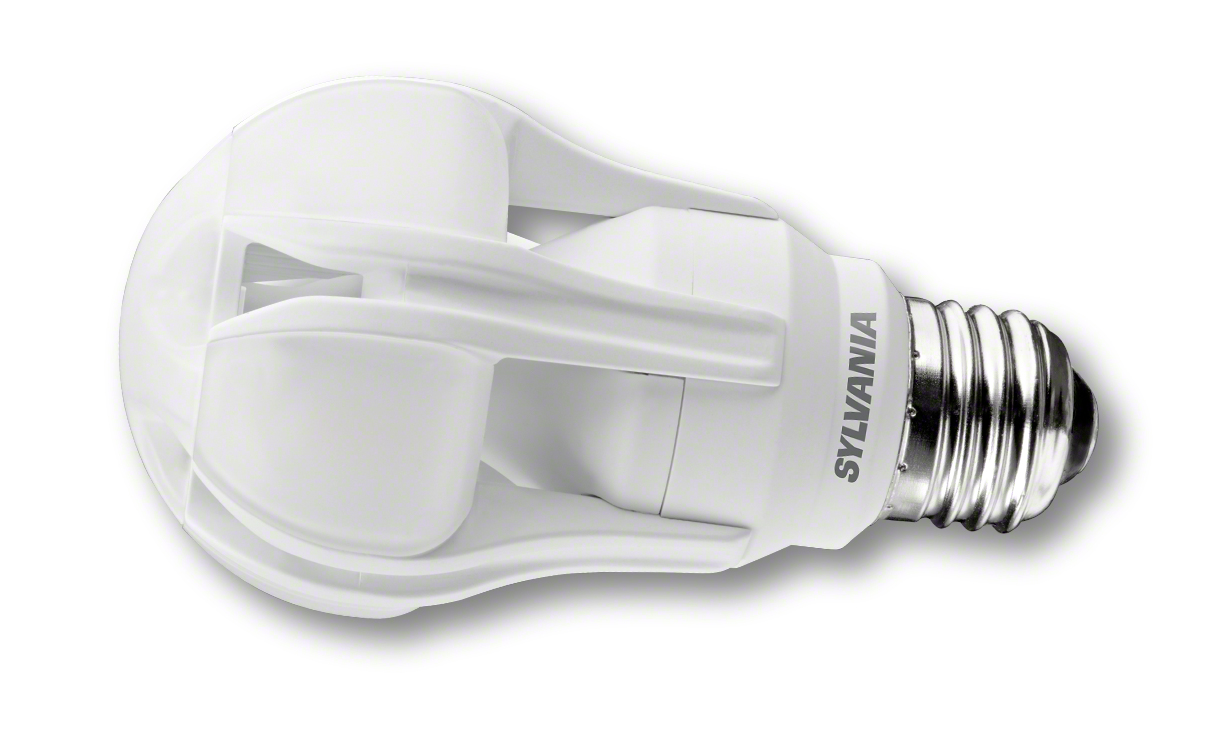Bright LED Bulbs Arrive At Last
Osram Sylvania this week is shipping an LED light bulb that gives off as much light as a 100-watt incandescent, a sign that lighting manufacturers have successfully tackled the technical challenge of making bright LED bulbs.

The bulb gives off light in all directions, making it suitable for most applications, and consumes 20 watts of power. The expected retail price is just under $50. Osram Sylvania estimates that the bulb will save $220 over its life, assuming consumers pay the national average of 11 cents per kilowatt-hour.
It comes in the A21 shape, slightly longer than a traditional incandescent bulb, and gives off 1,600 lumens. The light color is a yellow 2700 Kelvin and has a color rendering index, which is a measure of light quality, of 80.
Next month, Philips plans to have its own 100-watt equivalent A21 bulb available in stores, which consumes 22 watts and has a CRI of 80. General Electric and startup Switch are also expected to have their own 100-watt replacements in the months ahead as well.
The arrival of these bright LED bulbs is significant because they’re in the popular 100-watt, or 1600-lumen, category. Over the past few years, lighting manufacturers have released omnidirectional LED bulbs aimed at consumers starting with 40-watt equivalents and are finally reaching a level of brightness consumesr are familiar with. LEDs have heat sinks on them to wick away heat from the LED light sources, which is important to ensuring their long life.
In the U.S., a 2007 law set efficiency standards for lighting which are leading to a phase-out of traditional incandescent bulbs, starting with 100-watt bulbs this year and then progressing next year to the 75-watt category.
Functionally, these LED bulbs are good. I’ve been using the 100-watt equivalent Philips bulb for the past few weeks and it’s great to finally have that brightness available with an LED, although it’s longer shape means it won’t fit in all light fixtures. LEDs are more energy efficient than other technologies, can last more than 20 years, don’t have mercury, and their life won’t degrade from quickly turning them on and off as CFLs do.
The steep price of these LED bulbs is still a serious barrier to wider commercialization. Consumers can still buy less-expensive CFLs or halogens, a more efficient type of incandescent technology, even when the phase-out takes effect.
At the same time, the prices of consumer LEDs have come down significantly since manufacturers first introduced them. Best Buy last month introduced LED bulbs in the 40-watt and 60-watt categories priced at just under $14 and $17. Equivalent products from other lighting manufacturers cost more than double that price two years ago. (See, LED Lighting Riding Price-Performance Curve.)
Keep Reading
Most Popular
Large language models can do jaw-dropping things. But nobody knows exactly why.
And that's a problem. Figuring it out is one of the biggest scientific puzzles of our time and a crucial step towards controlling more powerful future models.
How scientists traced a mysterious covid case back to six toilets
When wastewater surveillance turns into a hunt for a single infected individual, the ethics get tricky.
The problem with plug-in hybrids? Their drivers.
Plug-in hybrids are often sold as a transition to EVs, but new data from Europe shows we’re still underestimating the emissions they produce.
Stay connected
Get the latest updates from
MIT Technology Review
Discover special offers, top stories, upcoming events, and more.